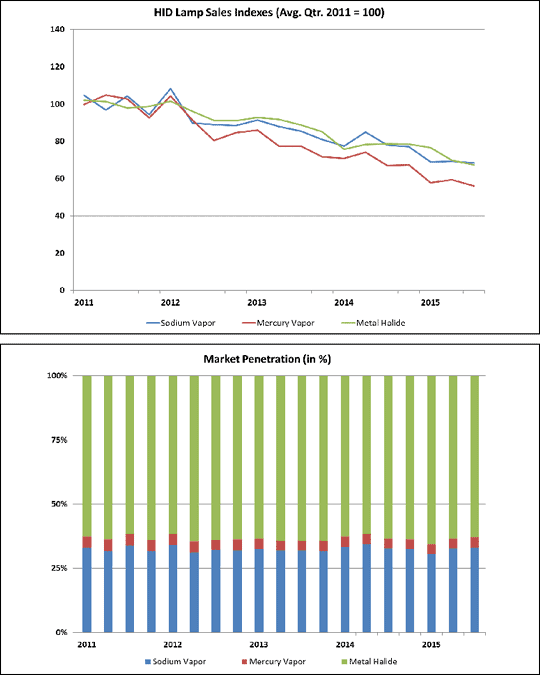The National Electrical Manufacturers Association (NEMA) commends the U.S. Department of Energy on its Dec. 2, 2015 decision that mandatory energy conservation standards for high-intensity discharge (HID) lamps are not technically feasible or economically justified. Furthermore, the DOE determined that higher energy conservation standards for HID lamps would not yield significant energy savings for the nation.
Commonly used in street lighting and large-area lighting both indoors and outdoors, HID lighting is a highly specialized and varied product class that includes metal halide and high-pressure sodium light sources. Over the past five years, the DOE undertook a careful analysis of earlier technical work and concluded that regulating the efficiency of HID lamps was unwarranted. The DOE's new analysis notes that the market for HID products is changing as new technologies, particularly solid-state lighting, are displacing HID lamps.
NEMA President and CEO Kevin Cosgriff stated, "We are pleased that the DOE carefully reviewed the market conditions, consumer benefits, burden on manufacturers, and changes in lighting technologies. NEMA supports their conclusion that regulating HID lamps is not in the public interest." NEMA provided technical information and commentary along with other interested parties to the department as part of its analysis.
Click here to read the complete DOE announcement.
Traditional luminaire shipment volumes decline
In two other separate press releases posted by NEMA recently, the organization noted HID lamp and fluorescent linear lamp sales had been steadily declining.
NEMA’s shipments indexes for high intensity discharge (HID) lamps declined in the third quarter of 2015. Sodium vapor lamp shipments fell 12.3% compared to the same period last year, shipments of mercury vapor lamps decreased by 16.3% year-over-year, and shipments of metal halide lamps decreased by 14.5% year-over-year (YoY).
Sodium vapor lamps accounted for 3.7% of HID lamp sales in 2015Q3, while mercury vapor and metal halide lamps accounted for 33.2% and 63.1%, respectively.
 |
Top: HID lamp sales index. Bottom:Different luminaires market penetration rates. (All photos courtesy of NEMA) |
|
|
|
NEMA's linear fluorescent lamp shipments indexes for 2015Q3 continued the downward trend that began in 2014. The index for T12 lamps declined for the seventh consecutive quarter, dropping by 40.4% on a year-over-year basis. T8 and T5 shipments also continued to decline, decreasing by 10.9 and 10.6%, respectively, on a year-over-year basis.
T8 lamps accounted for a 72.8% share of fluorescent lamp shipments in 2015Q3, with T12 lamps claiming a 15.5% share and T5 lamps a 10.9% share.
 |
|
Fluorescent T5, T8 sales (top) and different luminaires market penetration rates (bottom). |





 CN
TW
EN
CN
TW
EN







